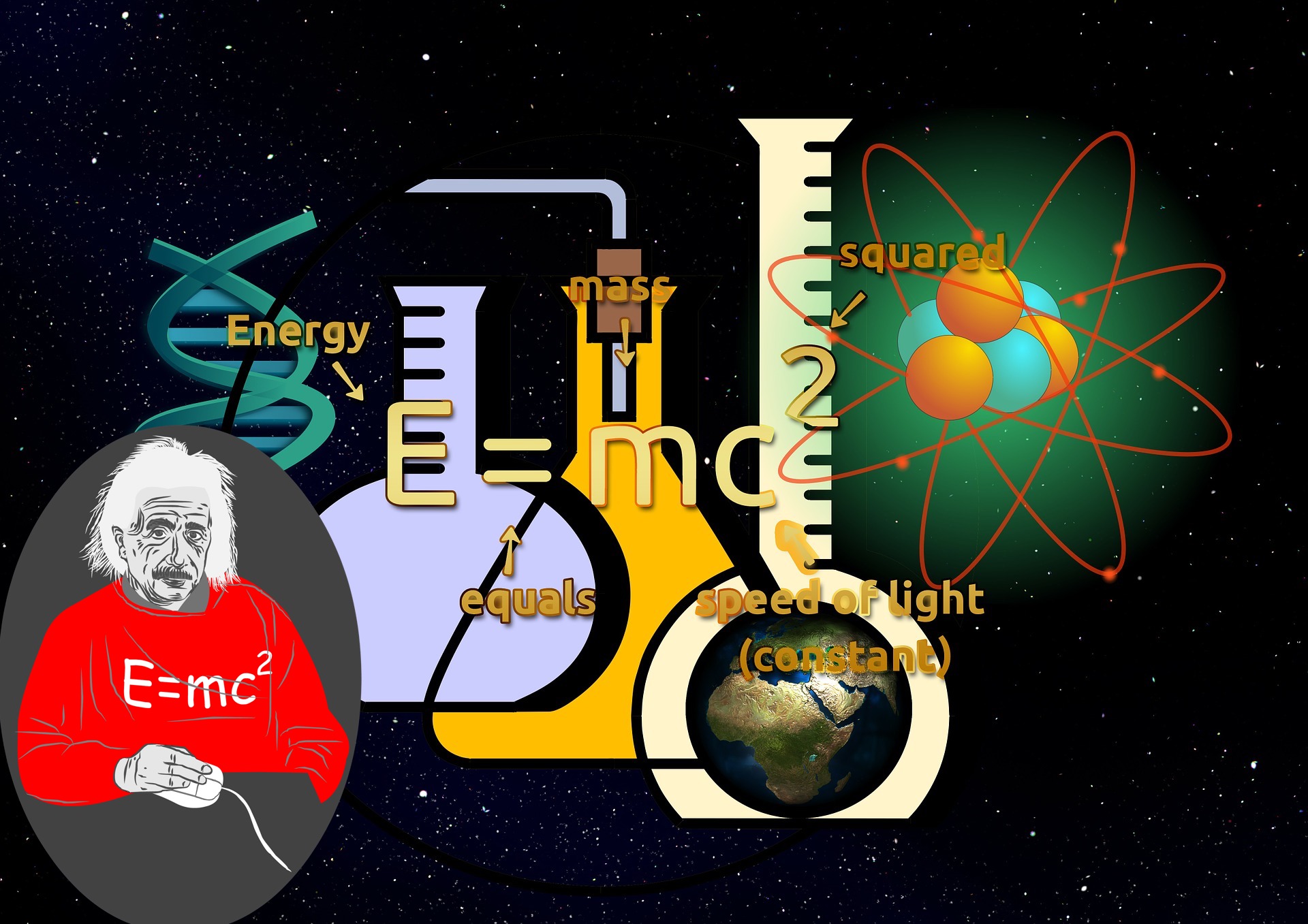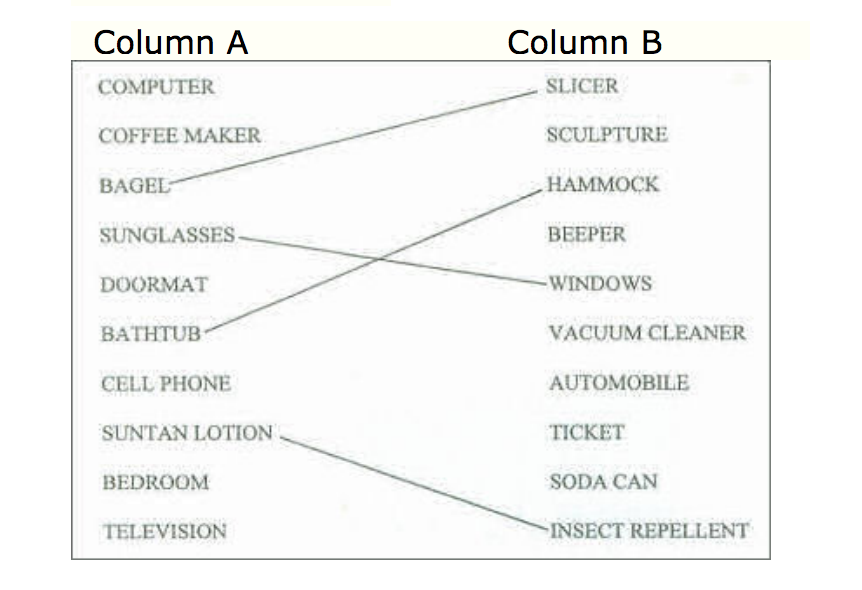
Have you hit a brick wall inventing a new product, trying to create a strategy for your business or personal life and felt like you're out of ideas?
You're not alone, we all get "writer's block" brainstorming how to solve persistent problems. Whether that's how to rise above the competition, fighting custody battles in split families, or creating your unique selling proposition for your service, product or business as a whole.
There is a technique that can help you break past this like the Kool-Aid Man bursting through bricks.

It's using an unrelated activity to stimulate your brain to make new connections. Einstein called this technique, thinking outside the box, but playing with multiple boxes: "Combinatory play," which he felt was essential to productive thinking.
Combinatory play means to explore a diverse collection of concepts and ideas, finding the common thread between many dissimilar fields.
Using this technique the big picture becomes more than just the sum of many different parts and it also diversifies your thinking through cross-pollination of many varied interests.
Einstein would take a break when working on a physics problem to play violin, as his form of combinatory play. On those days when Einstein would get stuck, he'd set aside his work and play the violin for a few hours.
During that break he'd suddenly get an idea that would help make a new connection to move forward on the problem at hand. Just like that.
Galileo often would spot mountains on the Moon due to his training in painting and drawing giving him a greater understanding of shading in the dark and bright regions of a landscape.
Albert Einstein first coined the phrase combinatory play in a letter to French mathematician Jacques Hadamard, but it's been used throughout history.
Taking a bath helped Archimedes discover the principle of buoyancy,Leonardo da Vinci studied placentas of calfs, jaws of crocodiles, muscles of a face, the light of the Moon, and the edge of shadows.
Einstein drew inspiration from David Hume, a Scottish philosopher who was one of the first to question the absolute nature of space and time.
Charles Darwin studied geology and economics to develop his theory of evolution.
David Bowie used a custom-developed computer program called the Verbalizer. He'd input sentences from journal entries and news articles which the Verbalizer would mix and match together.
He'd use these bizarre combinations as inspiration for writing song lyrics.
Larry Page and Sergey Brin who created Google, combined the frequency of citations used an academic paper in order to demonstrate its popularity to the internet on how many other sites link to one specific site.
This idea is what led to creating Google.
Netflix creator Reed Hastings combined the subscription model from his gym membership to video rentals after getting high late fees renting Apollo 13.
Why We Get Stuck in the First Place
When we get used to thinking in a certain way about a particular issue or problem we're trying to solve, our brain maps this pathway through our neurons.
Our brains are always working for order and predictability, and can get pretty set in non-productive routines.
When we see something novel, the dorsolateral prefrontal cortex (DLPFC) part of our brain is wired to review old rules and apply them to the new situation. Our brains do not want to create new ways if it can help it.
While going back to familiar paths can work for things we automate like driving and eating, it can also restrict our creativity. So it's necessary to take a break from this part of our brain if we want to create new solutions.
This is where combinatory play can help us do this by relaxing our mind.
3 Steps to Start Combinatory Play
1. Do Something New: Let Your Guard Down to Let in New Ideas
Next time you're stuck try doing a new unrelated activity. We stress ourselves out trying to solve problems and when we switch gears to a new unrelated activity, it lowers our guard to let a free flow of new ideas, through new neural pathways be created.
2. Combine 2 Unrelated Activities Together
Playful creativity combines 2 known ideas to make a 3rd new idea possible. Doing unrelated activities with the intention of learning a new path or method for solving a problem stimulates our creativity in a fresh way. This works subconsciously so if you don't get the "ah ha" moment right away - no worries it will come.
3. Switching Point of Views is Revealing
Just like having a business consultant helps you see the same issue through new eyes, switching your own perspective through combinatory play will lead to new angles being revealed.
Try walking around your mental room and seeing the same issue from an avatar's perspective. Create a persona of another person in a new niche and think of how they would view the same issue you're looking at.
Just as different countries may be decoupling their technology, you are decoupling neural pathways that are so used to the same thoughts you get stuck.
The next time you're wanting a new break through try doing something completely different to cross-train your brain. Trello's blog has some great suggestions here:
"Take a page out of the athlete’s playbook and cross train your brain. An Olympic runner doesn’t prepare for her next competition by simply running laps on the track; she pursues other physical activities such as swimming, weight training, or even pilates, for example."
"Each cross-training activity works a different, but complementary, part of the body that will help her get stronger in her event overall. The same goes for your brain. If you’re a novelist, try your hand at poetry. If you’re a painter, dabble in sculpting. If you’re a computer scientist, play around with web design."
Taking a nap and getting into REM sleep has shown to produce new ideas just as doing something, intentionally mundane can free your self-imposed stress up allowing the brain to wander.
That's how NASA engineer James H. Crocker fixed the distorted lens of the Hubble Telescope. He saw the European shower head in his German hotel was adjustable to fit different heights.
Crocker realized that, by using that same concept, NASA could make an automated device to reach inside Hubble and install corrective optics.
A Visual Combinatory Play Activity
Make two lists of 10 objects each on the left and right sides of the paper. Pick one from the left and combine it with one on the right. Play with the combinations until you find a promising new combination, then refine and elaborate it into a new invention.

Combining bagel with slicer yields a bagel slicer with plastic sides designed to hold the bagel and prevent rotation when slicing.
Suntan lotion and insect repellent combines to form a new product —one lotion that protects against both the sun and insects.
Cell phone and soda can inspire the idea of utilizing cell phones as devices that, with sensors, would enable users to dispense soda and other products from vending machines with the expense charged back to the vendor via the carrier.
Closing Thoughts - See Similarities in Different Things
The act alone of comparing and combining different things will inspire new ways of thinking. However, you can fast-track this by intentionally seeking to see the similarities between different ideas and activities.
Don't expect this to be a perfect fit, but you will develop new neural pathways to lead to your Eureka moment.
So for closing thoughts, I suggest you pick up a book or magazine about a subject you know nothing about. Go to another niche's business conference, and make friends with people from all types of professions, interests and backgrounds.
Initiate a conversation and ask people, "What's the most fascinating thing you're working on right now?"
When you hit that writer's block for creating anything new, ask,
"What different type of industry has faced something like this before? How did they solve it?"
You may just strike inspiration to create the next blockbuster for your business, and at the very least you'll keep moving forward, progressing your business to the next level.
So let me ask: What's the most interesting thing you're working on right now?
. . .
Enjoyed this blog? Signup here to get updates on new startup blogs.
Need done-for-you Facebook marketing? Book a call with me here.
Is Facebook not explaining why they disapproved an ad?
I worked at FB for years and offer FB Policy Consulting here
Available for freelance writing and guest posting on your blog: [email protected]






Leave a Reply
You must be logged in to post a comment.